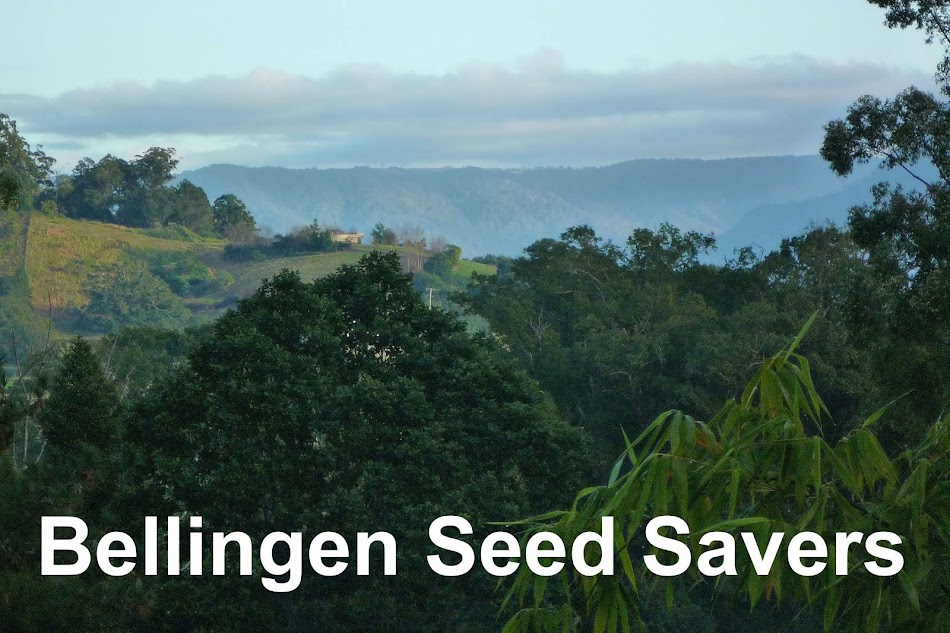Our last meeting for 2010 was held at Jen and Gai’s fascinating property near Bellingen. It is two years since the inaugural meeting of the Bellingen Seedsavers on the same property.
 |
| inside the extensive netted garden |
|
|
|
|
|
|
|
|
|
|
|
|
|
|
|
|
|
|
|
|
|
|
 |
| Jen explains the progress of their farm enterprise |
Jen and Gai have dramatically improved their originally poor and acidic soils with lime, gypsum, minerals, biodynamic preparations and loads of mulch. They have made extensive use of pigeon pea trees to shelter the vegetables from the summer sun and westerly winds.
Chickens roam in a huge netted enclosure. Jen and Gai fence off gardens from the chickens within the enclosure and then allow the chickens access when the plants are ready for harvesting, either for people or by chickens.
Alongside is a new goat enclosure for their two British Alpine milking goats and three kids. From the daily milking they gather enough milk for the household and for making a litre of yoghurt and one kilogram of cheese (haloumi, fetta, ricotta) amongst others.
At our meeting everyone thanked Irene for her management, development and guidance of the Bellingen Seedsavers. Volunteers were found to share management tasks in the areas of:
• seedsaving
• education
• communication
• meeting organization
We discussed the rationale for seedsaving in Bellingen and came up with the following reasons for the group’s existence:
• to preserve and share heritage seeds and plants for the growing of healthy food
• to preserve and share plants and seeds that have acclimatised and are successful in our immediate local environments.
• to provide a gathering and support network which shares knowledge for like-minded growers of food and useful plants.
Chinese Celery seeds were a new addition to our seed bank.
Chinese Celery
(from Chinese Vegetables.co.uk)
Chinese celery is a smaller version of the celery in Western markets, but its flavor is quite a bit stronger. The crisp, hollow stems of some varieties are light green, while others can be dark green or white. The leaves are typically jagged on the edges. Indispensable to many Asian soups or stews, Chinese celery is one of the most commonly grown vegetables in China. The entire plant is used, either fresh or dried. Add leaves and stalks to flavor vegetable or meat soups, or use them in a stir-fry. In China, celery is sometimes served as a dish by itself, stir-fried with a little soy sauce and sugar. The flavor may be a little too strong raw in a fresh green salad. Try it in small amounts at first.
This Chinese celery has long green stems with green shiny leaves with jagged margin. It prefers cool temperatures. Use the pencil-thin stalks and leaves in stews, stir-fry or salad. Considered indispensable for Chinese cooking, this celery has a stronger flavor than Western celery, so less is needed. It stays flavorful when dried.
Maturity: Approx. 50 days
Planting season: Spring or late summer






